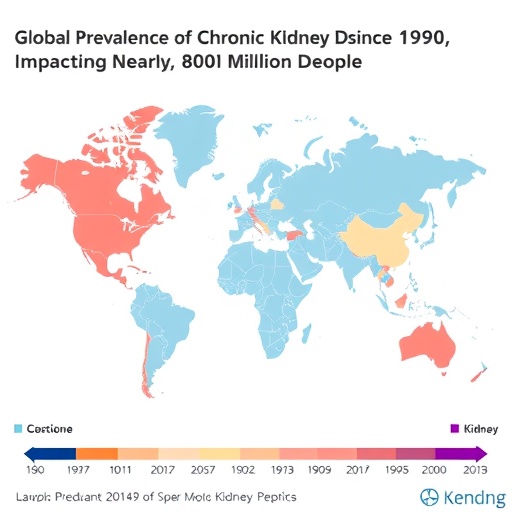Emerging research increasingly implicates air pollution as a culprit not only in respiratory and cardiovascular ailments but also in metabolic diseases such as insulin resistance and type 2 diabetes. A groundbreaking experimental study led collaboratively by Francesco Paneni of the University of Zurich and Sanjay Rajagopalan of Case Western Reserve University delves into the intricate biological mechanisms by which fine particulate matter disrupts metabolic health. This work sheds crucial light on how chronic exposure to atmospheric pollutants fundamentally alters brown adipose tissue (BAT), a metabolically active fat that plays a pivotal role in energy regulation.
Central to the investigation is PM2.5, a category of airborne particles smaller than 2.5 micrometers renowned for their ability to penetrate deep into pulmonary tissues and enter systemic circulation. The researchers simulated sustained urban pollution exposure by subjecting laboratory mice to controlled doses of concentrated PM2.5 aerosols for six hours daily across five days each week, continuing this regimen for an extensive 24 weeks. This experimental set-up was meticulously designed to model the chronic pollutant burden encountered by human populations in cities worldwide.
Brown adipose tissue, distinct from white fat, functions as a biological furnace that generates heat through a process known as non-shivering thermogenesis, significantly influencing systemic glucose metabolism and energy expenditure. After prolonged inhalation of PM2.5, the mice exhibited marked metabolic dysfunctions. Notably, they developed insulin resistance—a hallmark of disrupted glucose homeostasis—suggesting profound impairment in how the body manages blood sugar. Morphological and molecular analyses revealed exacerbated lipid accumulation within BAT, accompanied by fibrotic remodeling and oxidative tissue stress, indicating structural and functional deterioration.
Delving deeper, the researchers observed critical perturbations in the gene expression landscape of brown fat cells. Genes instrumental in thermogenic capacity, lipid metabolic pathways, and antioxidant defense mechanisms displayed disturbed expression profiles. These transcriptional shifts likely underlie the compromised energy-burning function of BAT seen in pollutant-exposed animals. The findings underscore BAT’s vulnerability as a metabolic organ acutely sensitive to environmental toxicants.
At the heart of this regulatory disruption lie epigenetic modifications—specifically changes in DNA methylation and chromatin architecture that govern gene activity without altering nucleotide sequences. Exposure to PM2.5 induced significant remodeling of the epigenetic environment in BAT cells. This included altered methylation patterns on DNA and a reduction in chromatin accessibility in gene regions vital for metabolic functions, hampering their expression. Such epigenetic reprogramming represents a crucial molecular conduit translating environmental insults into lasting metabolic impairment.
Two histone-modifying enzymes, HDAC9 (histone deacetylase 9) and KDM2B (lysine demethylase 2B), emerged as key effectors of these epigenetic alterations. Both enzymes modify histone proteins around which DNA is wrapped, thereby controlling the chemical tags that regulate chromatin dynamics and gene transcription. The research team demonstrated that PM2.5 exposure increased binding of HDAC9 and KDM2B to specific genomic loci within brown fat cells, diminishing methyl marks essential for gene activation. This enzymatic activity led to silencing of gene networks critical for BAT’s metabolic functions.
Importantly, functional experiments manipulating these enzymes confirmed their causative role. Silencing HDAC9 and KDM2B enzymatic activity restored brown fat’s thermogenic efficiency and improved systemic insulin sensitivity. Conversely, experimentally boosting their activity exacerbated metabolic impairments. This mechanistic insight highlights HDAC9 and KDM2B as promising molecular targets for therapies aimed at mitigating air pollution-induced metabolic disease.
This study’s implications resonate beyond the laboratory, providing a vital mechanistic link between an ubiquitous environmental hazard and the pathophysiology of metabolic disorders. By illuminating how chronic PM2.5 exposure epigenetically reprograms BAT to drive insulin resistance, the findings open new avenues for intervention strategies. Targeting epigenetic regulators like HDAC9 and KDM2B could potentially shield vulnerable metabolic tissues from pollutant-induced damage and reduce the growing global burden of diabetes.
The work also underscores the necessity of public health policies aimed at reducing airborne particulate concentrations worldwide. As urbanization intensifies, so does human exposure to fine pollutants, amplifying the risk of insulin resistance and diabetes epidemics. While medication and lifestyle modifications are mainstays of management, environmental interventions promise an upstream approach to curb the metabolic fallout of pollution.
Moreover, this research advances the understanding of brown adipose tissue itself, elevating its status as a critical mediator between environmental factors and metabolic health. By decoding how epigenetic machinery translates external insults into metabolic dysfunction, the study provides a molecular blueprint for future exploration of tissue-specific responses to environmental stressors.
The experimental design, utilizing chronic exposure in a controlled mouse model, offers robust translational relevance to human health. It captures the protracted time course over which air pollution may slowly erode metabolic resilience, paving the way for chronic metabolic diseases. Overcoming limitations inherent in epidemiological studies, this approach enables direct causative inference and dissection of intricate molecular pathways.
In summary, this pioneering research elucidates a dark link between air pollution and metabolic disease through epigenetic repression of brown adipose tissue function. The identification of HDAC9 and KDM2B as molecular gatekeepers of this process opens transformative therapeutic possibilities. These findings add urgency to environmental protection efforts and highlight the intricate interplay between external pollutants and internal metabolic regulation. Future investigations extending these discoveries in human studies and developing targeted epigenetic modulators hold promise for reversing pollution-driven metabolic decline.
Subject of Research: Animals
Article Title: Air pollution modulates brown adipose tissue function through epigenetic regulation by HDAC9 and KDM2B
News Publication Date: 23-Sep-2025
Web References: DOI: 10.1172/jci.insight.187023
References: JCI Insight
Keywords: Air pollution, PM2.5, brown adipose tissue, insulin resistance, metabolic disease, epigenetics, histone modification, HDAC9, KDM2B, DNA methylation, chromatin remodeling, thermogenesis
Tags: air pollution health effectsbrown adipose tissue functionchronic exposure to pollutantsenergy regulation and air pollutionenvironmental factors in metabolic healthexperimental studies on air pollutioninsulin resistance and air qualitymetabolic diseases and pollutantsobesity and diabetes connectionPM2.5 exposure impactrespiratory and cardiovascular diseasesurban pollution health risks





